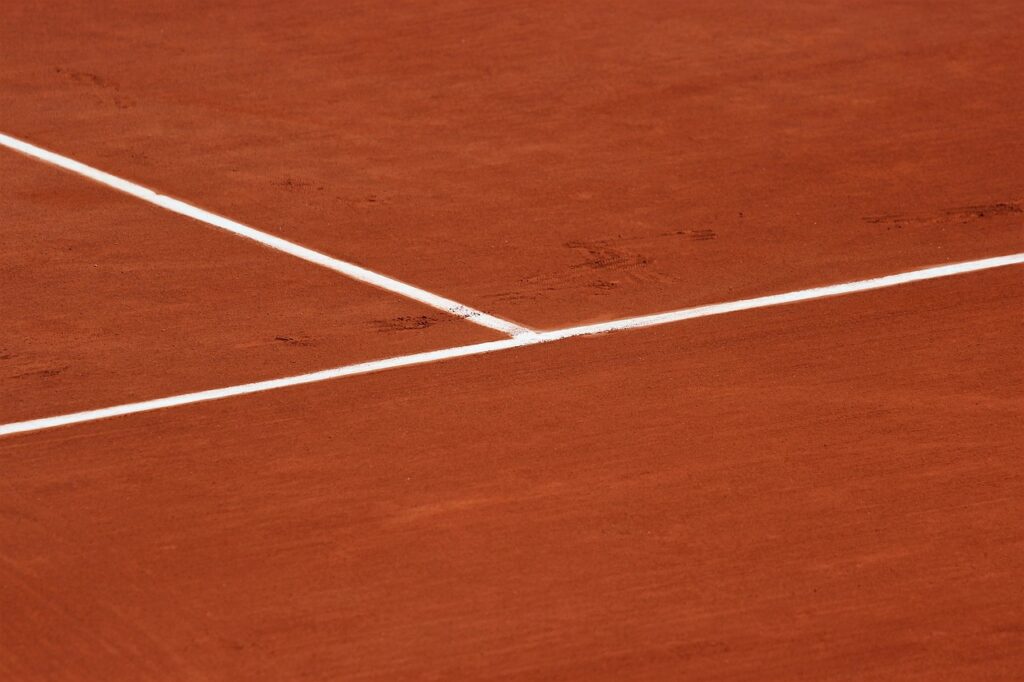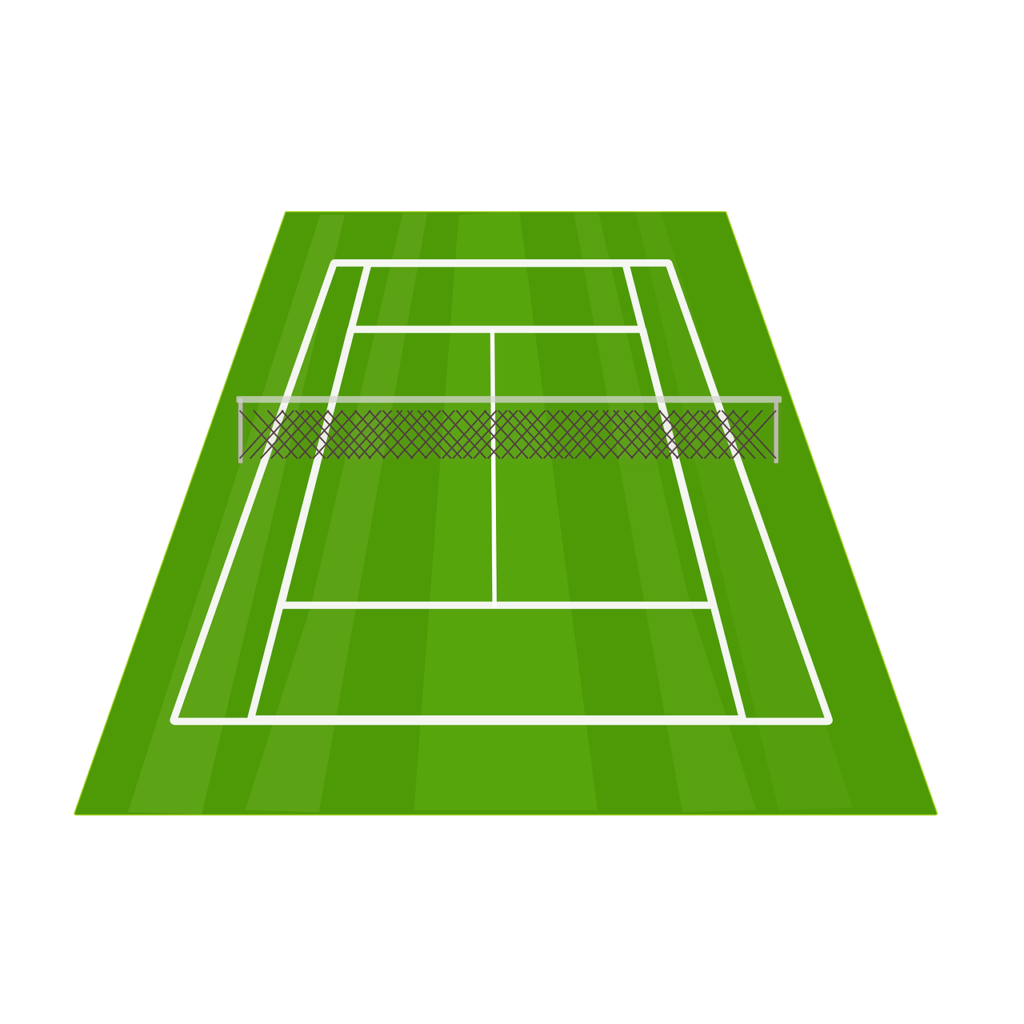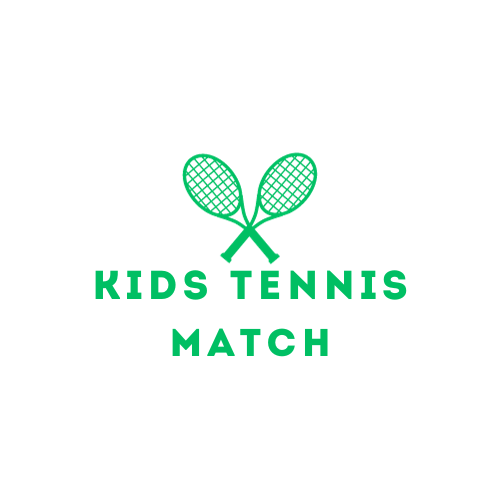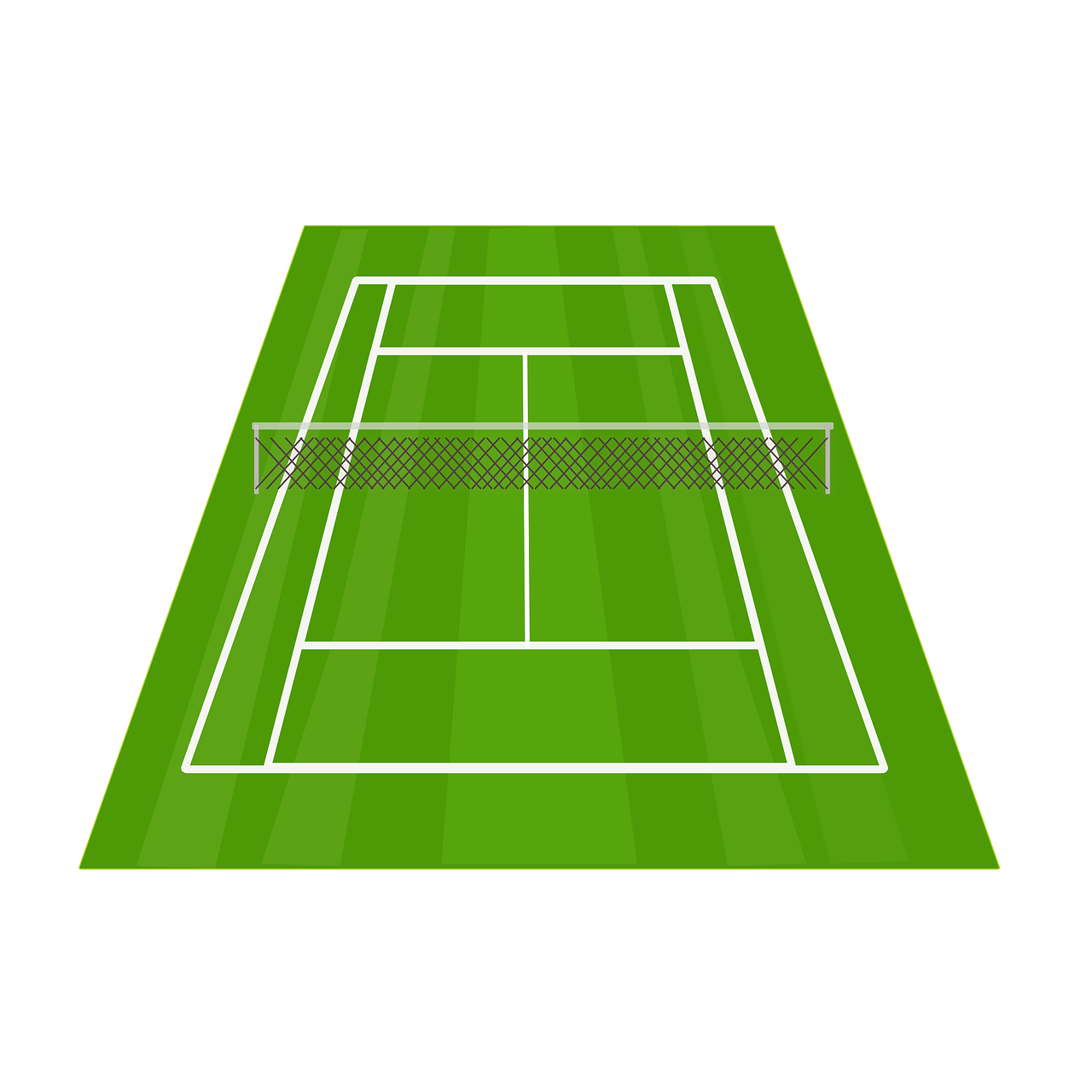If you’re a parent looking to introduce your child to the exciting world of tennis, you may be wondering about the ideal court size for them. After all, choosing the right court size can have a significant impact on their learning experience and overall enjoyment of the sport. In this article, we will explore the various factors to consider when determining the ideal court size for kids learning tennis, providing you with valuable insights to help you make an informed decision. So, let’s dive into the world of tennis courts and discover the perfect size for your aspiring young player!

Factors to Consider
When determining the ideal court size for kids learning tennis, there are several factors that need to be taken into consideration. These factors include the age of the kids, their physical abilities, their level of experience, their developmental stage, and safety concerns. Each of these factors plays a crucial role in determining the appropriate court size for kids to learn and develop their tennis skills.
Age of the Kids
The age of the kids is an important factor to consider when determining the ideal court size for tennis. Younger children, such as those in the 4-6 age group, may benefit from smaller court sizes that are more suitable for their smaller bodies and limited physical abilities. As children get older, they may be able to handle larger court sizes, gradually transitioning to full-size courts as they mature.
Physical Abilities
The physical abilities of the kids should also be taken into account when deciding on the appropriate court size for tennis. Younger children may have limited strength and coordination, making it difficult for them to cover a full-size court. In such cases, starting with smaller court sizes can help kids develop their physical abilities gradually and improve their tennis skills over time.
Level of Experience
The level of experience is another important factor to consider when determining the ideal court size for kids learning tennis. Beginners may find it overwhelming to play on a full-size court right away, as it can be challenging to cover the entire space and execute proper techniques. Starting with smaller court sizes allows beginners to focus on developing fundamental skills and gradually progress to larger courts as they gain more experience and confidence.
Developmental Stage
The developmental stage of the kids is an important aspect to consider when determining the ideal court size for tennis. Younger children may still be in the early stages of development, both physically and mentally. Smaller court sizes can provide a more suitable learning environment for these children, allowing them to develop their motor skills, hand-eye coordination, and other fundamental tennis skills at a pace that aligns with their developmental stage.
Safety Concerns
Ensuring the safety of the kids is of utmost importance when determining the ideal court size for tennis. Younger children may not yet have the physical strength and coordination to cover a full-size court without risking injury. By starting with smaller court sizes, kids can learn in a safer environment with reduced risk of accidents or injuries. As they progress in their skills and physical development, they can gradually transition to larger court sizes while maintaining a safe learning environment.
Official Court Sizes
There are several official court sizes designated for different levels of play in tennis. These court sizes include the full-size court, intermediate court, modified court, red court, orange court, and green court. Each court size has its own dimensions and is suitable for different age groups and skill levels.
Full-Size Court (78 feet x 27 feet)
The full-size court is the standard court size used in professional tennis matches. It measures 78 feet in length and 27 feet in width. It is most suitable for advanced players and older kids who have developed their skills and are capable of covering the entire court.
Intermediate Court (60 feet x 21 feet)
The intermediate court is slightly smaller than the full-size court, measuring 60 feet in length and 21 feet in width. It is designed for players who are transitioning from smaller court sizes to the full-size court. This court size is suitable for older children who have acquired a certain level of skill and experience but may still need a smaller playing area to further develop their techniques and improve their game.
Modified Court (60 feet x 21 feet)
The modified court is also 60 feet in length and 21 feet in width, making it the same dimensions as the intermediate court. This court size is commonly used for competitive play among young age groups, typically between the ages of 9 and 10. It provides a smaller playing area that is suitable for these children as they continue to develop their skills and gain more experience.
Red Court (36 feet x 18 feet)
The red court is significantly smaller than the full-size court, measuring 36 feet in length and 18 feet in width. It is specifically designed for young children between the ages of 4 and 8. The smaller court size allows these children to develop their tennis skills in a more manageable playing area, making it easier for them to cover the court and play the game with enjoyment and success.
Orange Court (60 feet x 21 feet)
The orange court is the same size as the intermediate court, measuring 60 feet in length and 21 feet in width. It is designed for children between the ages of 8 and 10 who have outgrown the smaller court sizes but are not yet ready for the full-size court. The orange court provides a suitable playing area that challenges these children while allowing them to continue developing their skills and techniques.
Green Court (78 feet x 27 feet)
The green court is the same size as the full-size court, measuring 78 feet in length and 27 feet in width. It is typically used as a transitional court for players between the ages of 10 and 12 who are preparing to move on to the full-size court. The green court allows these players to gradually adapt to the larger court size while still providing a manageable playing area for their skill level.
Advantages of Smaller Court Sizes
While each court size has its own benefits, there are several advantages to starting with smaller court sizes when kids are learning tennis. These advantages include easier court coverage, quicker skill development, enhanced technique and form, increased confidence and motivation, reduced injury risk, and a more engaging and enjoyable learning experience.
Easier for Kids to Cover the Court
Smaller court sizes make it easier for kids to cover the entire court. Younger children, in particular, may have limited physical abilities and may struggle to cover a full-size court. By starting with smaller court sizes, kids can gradually develop their agility, footwork, and court coverage skills. This allows them to build a solid foundation before transitioning to larger court sizes.
Quicker Skill Development
Playing on smaller court sizes can lead to quicker skill development. With less court area to cover, kids can focus on developing specific fundamental skills, such as hand-eye coordination, stroke technique, and shot selection. Smaller court sizes allow for more repetitions and increase the opportunity for skill refinement, leading to a more rapid development of tennis skills.
Enhanced Technique and Form
Smaller court sizes provide an environment where kids can focus on their technique and form. With a reduced playing area, kids have the opportunity to refine their strokes and practice proper technique. This emphasis on technique and form at an early stage creates a strong foundation for advanced skills and ensures that kids develop proper habits and mechanics from the beginning.
Increased Confidence and Motivation
Playing on smaller court sizes can boost kids’ confidence and motivation. By starting with a smaller playing area that aligns with their abilities, kids are more likely to experience success and achieve small milestones. This success can increase their confidence in their abilities and motivate them to continue practicing and improving their tennis skills.
Reduced Injury Risk
Smaller court sizes can help reduce the risk of injuries. Young children may not yet have the necessary strength and coordination to cover a full-size court without the risk of accidents or injuries. By starting with smaller court sizes, kids can learn and play in a safer environment that minimizes the chances of collisions or overexertion.
More Engaging and Enjoyable
Smaller court sizes provide a more engaging and enjoyable learning experience for kids. With a reduced playing area, kids are actively involved in each point and have more opportunities to hit the ball and be directly engaged in the game. This active participation and increased involvement make the learning process more enjoyable and contribute to a positive tennis experience for kids.
Disadvantages of Smaller Court Sizes
While there are many advantages to starting with smaller court sizes, there are also some disadvantages to consider. These disadvantages include limited opportunities for full-court play, potential transition challenges, less exposure to real-game scenarios, and adjustment to standard court sizes.
Limited Opportunities for Full Court Play
One disadvantage of starting with smaller court sizes is that it limits the opportunities for full-court play. Full-court play is an essential aspect of tennis that allows players to experience and understand different strategies, court coverage, and shot placement. By starting with smaller court sizes, kids may miss out on the chance to learn and practice these aspects of the game until they transition to larger court sizes.
Potential Transition Challenges
Transitioning from smaller court sizes to larger court sizes can pose challenges for kids. The increased court size may require adjustments to footwork, court coverage, and stroke technique. This transition can be challenging and may initially affect the performance and confidence of kids. However, with proper training and gradual progression, these challenges can be overcome, and kids can successfully adapt to larger court sizes.
Less Exposure to Real-Game Scenarios
Playing on smaller court sizes may limit the exposure of kids to real-game scenarios. Smaller courts may not replicate the conditions and dynamics of a full-size court match. Therefore, kids may have limited experience in dealing with the challenges and scenarios they would encounter in a real game. To mitigate this disadvantage, coaches and parents should provide opportunities for kids to gradually transition to larger court sizes and gain exposure to more realistic game situations.
Adjustment to Standard Court Sizes
Starting with smaller court sizes may require adjustment when transitioning to standard court sizes. Kids who have primarily trained and played on smaller courts may find it challenging to adapt to the larger dimensions of a full-size court. The transition may require adjustments in footwork, court coverage, and shot execution. However, with proper training and a gradual progression, kids can successfully adapt to standard court sizes and continue their tennis journey.
Importance of Progression
Progression is crucial when determining the ideal court size for kids learning tennis. The progression should be gradual, taking into account the age and skill level of the kids. Gradually transitioning kids from smaller court sizes to larger court sizes allows them to develop their skills while maintaining a suitable learning environment. This progression ensures that kids are continuously challenged and can experience steady improvement in their tennis abilities.
Gradual Transition to Full-Size Courts
A gradual transition to full-size courts is essential for kids learning tennis. Beginning with smaller court sizes allows kids to develop fundamental skills, gain confidence, and build a solid foundation. As kids become more proficient and physically capable, they can gradually progress to larger court sizes. This gradual transition ensures that kids are well-prepared to handle the challenges of a full-size court and can continue to develop their skills effectively.
Age and Skill Appropriate Progression
The progression to larger court sizes should be age and skill appropriate. Each age group and skill level has specific developmental needs and capabilities. Coaches and parents should consider these factors when determining when to transition from smaller court sizes to larger ones. Ensuring that the progression aligns with the abilities and readiness of the kids helps to optimize their learning experience and development.
Balancing Skill Development and Game Experience
The progression to larger court sizes should strike a balance between skill development and game experience. While it is important for kids to develop their tennis skills, it is equally important for them to gain experience in real-game scenarios. Coaches and parents should provide opportunities for kids to play on larger court sizes, even if they are not yet fully proficient in their skills. This balance between skill development and game experience allows kids to transfer their skills into competitive play and develop a well-rounded game.
Effect of Court Size on Skill Development
Court size has a significant impact on the development of various tennis skills. Different court sizes require different physical and mental abilities, leading to the development of motor skills, hand-eye coordination, footwork and agility, shot selection and control, and strategic thinking.
Motor Skills
Motor skills, which include movements and coordination, are developed through playing on different court sizes. Smaller court sizes allow kids to focus on developing their motor skills, such as running, stopping, changing direction, and hitting the ball. These skills are fundamental for any sport, including tennis, and playing on smaller courts helps kids refine and improve their motor skills.
Hand-Eye Coordination
Hand-eye coordination is a critical skill in tennis that is developed through playing on various court sizes. Smaller court sizes provide kids with more opportunities to track the ball, time their swings, and make contact with the ball. This repetitive practice on smaller courts enhances their hand-eye coordination, allowing them to make precise and accurate shots as they progress to larger court sizes.
Footwork and Agility
Footwork and agility are essential for court coverage and proper movement on the tennis court. Different court sizes challenge kids’ footwork and agility abilities differently. Starting with smaller court sizes allows kids to focus on mastering basic footwork patterns and develop their agility within a smaller playing area. As they progress to larger court sizes, they can further refine and expand their footwork and agility skills to cover a full-size court effectively.
Shot Selection and Control
Playing on different court sizes influences shot selection and control. Smaller court sizes may require kids to focus on shorter strokes and more control to keep the ball within the boundaries. This emphasis on shot control helps kids develop a consistent and accurate shot-making ability. As they transition to larger court sizes, they can gradually incorporate more power and depth into their shots while maintaining control and precision.
Strategic Thinking
Different court sizes present unique strategic challenges and opportunities. Smaller court sizes require quicker decision-making and executing strategies that focus on control and accuracy. As kids progress to larger court sizes, they have more space to work with and can develop a better understanding of court positioning, shot selection, and tactical play. This progression helps kids develop their strategic thinking abilities to outmaneuver opponents and maximize their chances of winning.

Recommendations for Different Age Groups
When considering the ideal court size for kids learning tennis, recommendations can be made based on different age groups. These recommendations take into account the developmental needs and capabilities of each age group. While these recommendations are general guidelines, it is crucial to consider the individual abilities and readiness of each child.
Ages 4-6
For children in the 4-6 age group, the red court, with dimensions of 36 feet x 18 feet, is recommended. The smaller court size allows these young children to cover the court more easily and develop their fundamental motor skills, hand-eye coordination, and basic tennis techniques. The red court provides a suitable learning environment that is engaging, enjoyable, and safe for kids in this age group.
Ages 7-9
Children between the ages of 7 and 9 can benefit from playing on the modified court, which has the same dimensions as the intermediate and orange courts (60 feet x 21 feet). This court size provides a slightly larger playing area, allowing these children to further develop their skills and techniques. The modified court encourages more strategic thinking, footwork, and court coverage, preparing them for the transition to larger court sizes in the future.
Ages 10-12
For children in the age group of 10-12, the green court, which has the same dimensions as the full-size court (78 feet x 27 feet), can be introduced. The green court serves as a transitional court, allowing these children to gradually adapt to the larger playing area. Playing on the green court challenges their footwork, court coverage, shot selection, and strategic thinking abilities, preparing them for the full-size court as they progress in their tennis journey.
Ages 13+
At the age of 13 and above, players are generally ready to transition to playing on the full-size court (78 feet x 27 feet). By this age, they have developed the necessary physical abilities, skills, and tactical understanding to cover the entire playing area effectively. Playing on the full-size court provides the real-game experience they need to further refine their skills, compete competitively, and continue their tennis development.
Experiences of Tennis Programs and Federations
Many tennis programs and federations encourage the use of smaller court sizes for kids learning tennis. These programs and federations have recognized the benefits of starting with smaller court sizes and have implemented appropriate court sizes for each age group. Here are a few examples:
USTA (United States Tennis Association)
The USTA recommends the use of smaller court sizes, such as the red, orange, and green courts, for kids in the early stages of their tennis journey. The USTA’s Net Generation program focuses on age-appropriate court sizes and equipment, allowing kids to learn and enjoy the game of tennis while progressing at their own pace.
ITF (International Tennis Federation)
The ITF has also recognized the importance of appropriate court sizes for kids learning tennis. They have introduced the Play and Stay program, which advocates for smaller court sizes and lower-compression balls for younger players. The program aims to create a positive learning environment that fosters skill development, enjoyment, and long-term participation in the sport.
LTA (Lawn Tennis Association)
The LTA in the United Kingdom has embraced the use of modified court sizes for kids learning tennis. Their Mini Tennis program introduces the red, orange, and green courts to cater to the developmental needs of young players. By providing suitable court sizes, the LTA ensures that children have a positive learning experience and are more likely to continue playing and enjoying the sport.
Tennis Australia
Tennis Australia’s Hot Shots program promotes the use of smaller court sizes and equipment tailored to each age group. The program emphasizes the importance of appropriate court sizes in facilitating skill development, enjoyment, and a positive tennis experience for kids. By implementing smaller court sizes from the early stages, Tennis Australia aims to create a solid foundation for future tennis players.
Tennis Canada
Tennis Canada’s Progressive Tennis program encourages the use of smaller court sizes, lower-compression balls, and age-appropriate equipment. The program recognizes the benefits of starting with smaller court sizes to enhance skill development, enjoyment, and long-term participation in tennis. By implementing these measures, Tennis Canada ensures that kids have a positive and engaging tennis experience from the beginning.
Considerations for Coaches and Parents
Coaches and parents play a vital role in determining the ideal court size for kids learning tennis. Here are a few key considerations for coaches and parents:
Assessing the Child’s Abilities and Needs
Coaches and parents should assess the child’s abilities, needs, and developmental stage when determining the ideal court size. Each child is unique, and understanding their capabilities and readiness will help guide the decision-making process. By considering individual factors, coaches and parents can create a plan that aligns with the child’s needs and maximizes their tennis development.
Consulting with Tennis Professionals
Consulting with tennis professionals, such as coaches and trainers, can provide valuable insights into determining the ideal court size for kids learning tennis. These professionals have the knowledge and experience to assess the child’s abilities, recommend appropriate court sizes, and design training programs that best suit the child’s needs. Their expertise can ensure that the child receives the necessary guidance and support throughout their tennis journey.
Encouraging a Love for the Sport
Coaches and parents should prioritize creating a positive and enjoyable environment that encourages kids to develop a love for the sport of tennis. Starting with smaller court sizes can contribute to this positive experience, as it allows kids to experience success, have fun, and build confidence. By fostering a love for the sport at an early stage, coaches and parents can lay the foundation for long-term participation and enjoyment of tennis.
Creating a Positive Learning Environment
Creating a positive learning environment is essential when determining the ideal court size for kids learning tennis. Coaches and parents should focus on providing support, encouragement, and constructive feedback to motivate kids and foster their development. A positive learning environment promotes self-confidence, resilience, and a growth mindset, which are crucial for continued improvement in tennis skills.
Conclusion
In conclusion, the ideal court size for kids learning tennis depends on several factors, including the age of the kids, their physical abilities, their level of experience, their developmental stage, and safety concerns. Starting with smaller court sizes offers many advantages, such as easier court coverage, quicker skill development, enhanced technique and form, increased confidence and motivation, reduced injury risk, and a more engaging and enjoyable learning experience. However, there are also some disadvantages to consider, such as limited opportunities for full-court play and potential transition challenges. Progression from smaller court sizes to larger court sizes is essential, ensuring that kids can develop their skills while maintaining a suitable learning environment. Court size also has a significant impact on the development of various tennis skills, including motor skills, hand-eye coordination, footwork and agility, shot selection and control, and strategic thinking. Different age groups benefit from different court sizes, and various tennis programs and federations have recognized the importance of appropriate court sizes for kids learning tennis. Coaches and parents play a crucial role in determining the ideal court size, assessing the child’s abilities and needs, consulting with tennis professionals, encouraging a love for the sport, and creating a positive learning environment. By considering all these factors, coaches and parents can ensure that kids have the best possible experience and development in their tennis journey.


